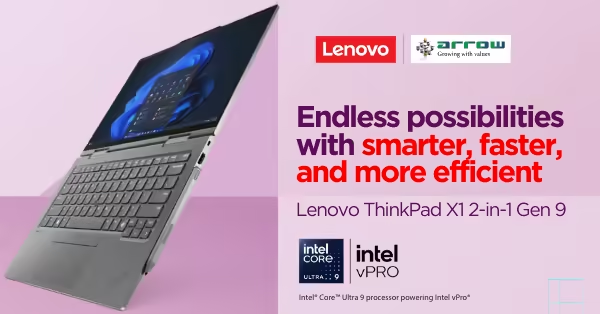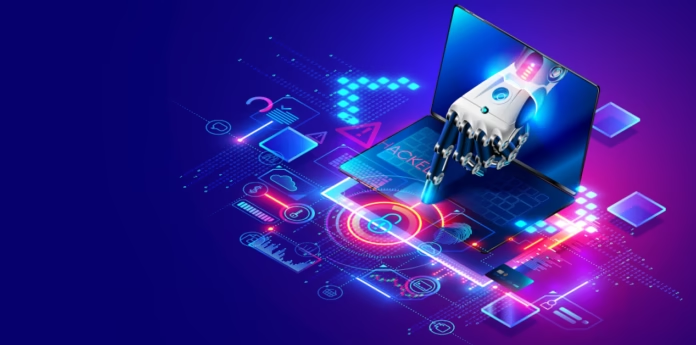For decades, software development inside Global Captive Centres was a tightly controlled process. Developers worked from secure campuses, using company-managed desktops, shielded by network firewalls and monitored by strict access controls. Security meant physical presence—and everything outside that bubble was considered a threat.
But that model doesn’t work anymore. The workplace has changed. Developers now expect flexibility, and business leaders demand agility. Security, however, can’t be compromised. So the question becomes: How do you protect sensitive data while giving developers the freedom to work from anywhere?
That’s the challenge today’s GCCs are solving—with new tools, new thinking, and partners like Arrow PC Network, which is helping modern enterprises turn traditional delivery models into smart, secure ecosystems built for today’s hybrid world.
The Shift from Fixed Desktops to Flexible Delivery
Remember when a developer’s setup was all about the power of their local machine? Now, the physical desktop is taking a back seat. The emphasis has moved to virtualized environments—cloud-based workspaces that can be accessed securely from home, the office, or wherever the work happens.
This shift didn’t happen overnight. The pandemic pushed GCCs to adopt hybrid work faster than planned. What started as a stopgap is now standard operating procedure.
Leading Global Captives have realized that relying on old VPNs and physical endpoints won’t cut it anymore. They’re turning to Virtual Desktop Infrastructure (VDI), Zero Trust access models, and robust identity management tools to give developers a secure but smooth experience, no matter their location or device.
Giving Developers the Tools Without Giving Away Control
At the heart of this transformation is the simple idea that developers should be able to do their jobs without jumping through hoops—or putting data at risk. With VDI, developers access pre-configured virtual machines equipped with everything they need: IDEs, SDKs, and code repositories. But unlike traditional setups, no data lives on the user’s device. Everything runs within a secure, centralized environment.

Zero Trust Network Access (ZTNA) is replacing outdated VPN systems. Instead of granting full network access, ZTNA allows precise control—users get access only to what they need, based on their role, device status, and risk profile.
And then there’s identity. That’s the new gatekeeper. Advanced identity and access management tools—integrated with multi-factor authentication and sometimes even biometrics—ensure that only verified users can enter the system.
Companies like Arrow PC Network specialize in delivering these systems at scale. Their IT services help Global Captives build these layers of security into everyday workflows, not as an afterthought but as a core design principle.
Hybrid Doesn’t Just Mean Remote
Many assume hybrid work is simply remote work plus a few days in the office. But for Global Captive Centres, it’s much more strategic. It means allowing globally distributed agile teams to collaborate in real time—across regions, platforms, and time zones—without skipping a beat.
In practice, this looks like VDI sessions hosted on secure servers, monitored in real time. It includes secure collaboration tools, session recording for audit purposes, and granular control over who accesses what—and when.
Some captives blend remote access with in-person sprints. Developers may work remotely most of the time but come together on-site during critical phases like reviews or testing. This hybrid model blends the best of both worlds: focus, flexibility, and fast delivery.
Business Wins: From Cost Savings to ESG Gains
Rebuilding how development is done isn’t just about technology—it’s about the bottom line. Moving from physical desktops to virtual environments can slash hardware costs by up to 60%. Devices last longer, software management becomes simpler, and IT support needs drop significantly.
There’s a sustainability angle too. Virtual workspaces use less power, require less hardware, and generate fewer e-waste concerns—key advantages for companies with ESG commitments.
And then there’s agility. Onboarding a new developer used to take days, even weeks, between issuing laptops and configuring tools. Now, GCCs can spin up secure virtual environments in hours—even on a contractor’s personal laptop—thanks to bootable OS tools and centralized access management.
For companies handling government or financial data, it’s not just about speed—it’s about compliance. Systems built around real-time monitoring, encryption, and contextual access controls help captives meet GDPR, DPDP, and RBI cybersecurity mandates without holding up projects.
What This Looks Like in the Real World
In finance, developers working on sensitive banking apps are using secure, biometric-enabled virtual machines to test updates from home—all while meeting strict audit and data protection requirements.
In IT outsourcing, providers are building project-specific development pods—secure environments that allow seamless client onboarding without rebuilding infrastructure every time.
In public sector projects, national security-grade safeguards are being implemented through Zero Trust and centralized identity frameworks, allowing developers to contribute to core government platforms while staying compliant.
It’s More Than Just a Tech Upgrade
The move from hardware to hybrid delivery is not about abandoning desktops—it’s about transforming them into secure, flexible tools. It’s about control, compliance, and empowering developers without slowing them down.
Arrow PC Network, with its deep domain knowledge and tailored IT services, is helping organizations redesign their tech strategy for this new normal. They’re enabling Global Captives to go beyond business continuity and build delivery models that are resilient, scalable, and secure by design.
If your development teams are still tied to outdated systems, it’s time to rethink. Because in the world of digital innovation, the ability to work from anywhere securely is no longer a perk. It’s a necessity.




